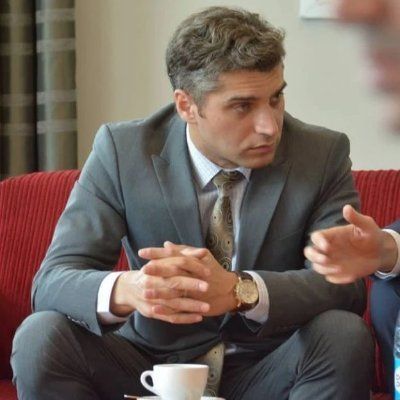Armenia faces its moment of truth on constitutional reform [OPINION]
![Armenia faces its moment of truth on constitutional reform [OPINION]](https://www.azernews.az/media/2025/11/23/nikol-asulis-ss-1024x682.jpg)
There is a saying that people are born the same, yet over time, desire and temptation can mould a person into something quite different, even reshaping their character. Countries, too, undergo such transformations; once freed from the levers of empires, they often experience a period of distortion before rediscovering who they truly are.
After the collapse of the Soviet Union, Armenia in 1990–91, declared both sovereignty and independence. But those who held power at the time succumbed to their own ambitions and to the false nationalist fantasies seeded into public consciousness, making a path that led the nation towards a dead end. Today, it is Armenia’s constitution that stands as the principal barrier to peace in the South Caucasus.
It is no coincidence that, at the very moment Armenia finds itself staring into the abyss, Prime Minister Nikol Pashinyan now openly admits that the country needs a new constitution. This need has existed for many years, but previous political elites, and a society shaped by decades of misguided ideological propaganda, were unwilling to face the truth. Time, however, has a habit of separating illusion from reality. The same authorities that once occupied Garabagh consoled their public with fantasies of borders stretching to the seas. Yet these delusions left Armenia isolated for more than three decades.
As the old saying goes, “Time is the best healer.” Armenia now recognises that the structures and governance it inherited were fundamentally flawed. Progress cannot be built on conquest or mythmaking, but on mutual respect and constructive relations with neighbours. Even senior American officials have acknowledged this shift. As US Special Envoy Steve Witkoff put it so pointedly, he praised President Ilham Aliyev for liberating Garabagh without pushing into Armenian territory, "though he could have. Aliyev acted with restraint, demonstrating a magnanimity that few leaders in such a moment would have shown," he said at one of his meetings.
Indeed, if Azerbaijan had wished, Yerevan, Göycha, even Zangazur could have been taken by force. But that was never Baku’s agenda. Instead, Azerbaijan repeatedly urged Armenia to embrace a peace agenda, warning it that the geopolitical chessboard of the South Caucasus was shifting fast. Armenia may have been blind to the checkmate awaiting it, but its former patron, Russia, and the far more perceptive West saw it clearly. Today’s Armenian leadership, its illusions finally stripped away, is beginning to confront realities it long dismissed.
This wider awakening forms the essential backdrop to the current constitutional debate in Yerevan. Pashinyan’s argument is that the existing constitution, drafted in 1995 and amended twice since, is viewed by many Armenians as the legacy of discredited regimes. It lacks organic legitimacy and fails to reflect the citizen as the true sovereign. His government argues that a new constitution could create a unified national identity within the boundaries the world actually recognises, not those that Armenian nationalism once imagined.
But the constitutional debate is not simply a matter of national introspection. It sits at the heart of the peace process with Azerbaijan. Baku has long maintained that Armenia’s constitution, through references to the 1990 Declaration of Independence, implicitly asserts territorial claims on Azerbaijan. Pashinyan has cautiously acknowledged this, signalling his readiness to remove ambiguity that undermines the peace treaty both sides say they want.
He has also tied constitutional reform to long-overdue changes in the justice system. By his own admission, Armenia’s courts operate in a bubble, detached from public confidence. The introduction of jury trials is one of several innovations being considered, a sign that this constitutional debate is also about modernising the state itself.
A referendum is planned, with a draft expected by 2026 and a nationwide vote pencilled in for 2027. Yet as with any attempt to shake up entrenched systems, fierce opposition has emerged. Critics accuse Pashinyan of capitulation to Azerbaijani demands, while others see an attempt to consolidate power under the guise of reform. For now, Armenia’s Justice Minister, Srbuhi Galyan, has confirmed that work on the draft is underway.
Armenia stands at a crossroads. It can cling to the outdated narratives that brought it isolation, war, and economic stagnation. Or it can embrace a constitutional transformation that reflects geopolitical reality and opens the door to lasting peace. Change is seldom easy, and there will always be those who prefer to live in the past. But the writing is on the wall: only through political maturity and constitutional clarity can Armenia hope to secure a future defined not by conflict, but by stability, growth, and genuine sovereignty.
Here we are to serve you with news right now. It does not cost much, but worth your attention.
Choose to support open, independent, quality journalism and subscribe on a monthly basis.
By subscribing to our online newspaper, you can have full digital access to all news, analysis, and much more.
You can also follow AzerNEWS on Twitter @AzerNewsAz or Facebook @AzerNewsNewspaper
Thank you!

